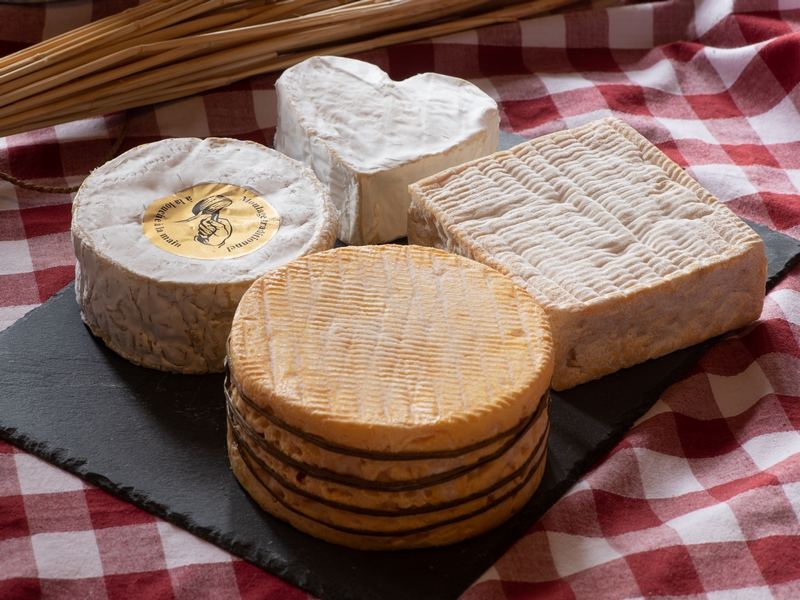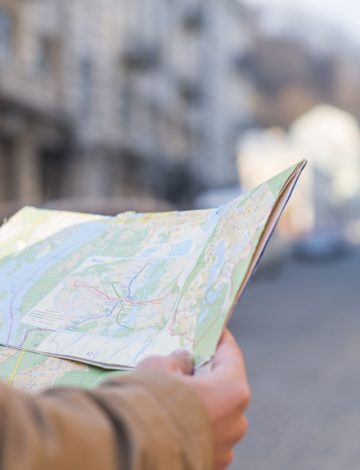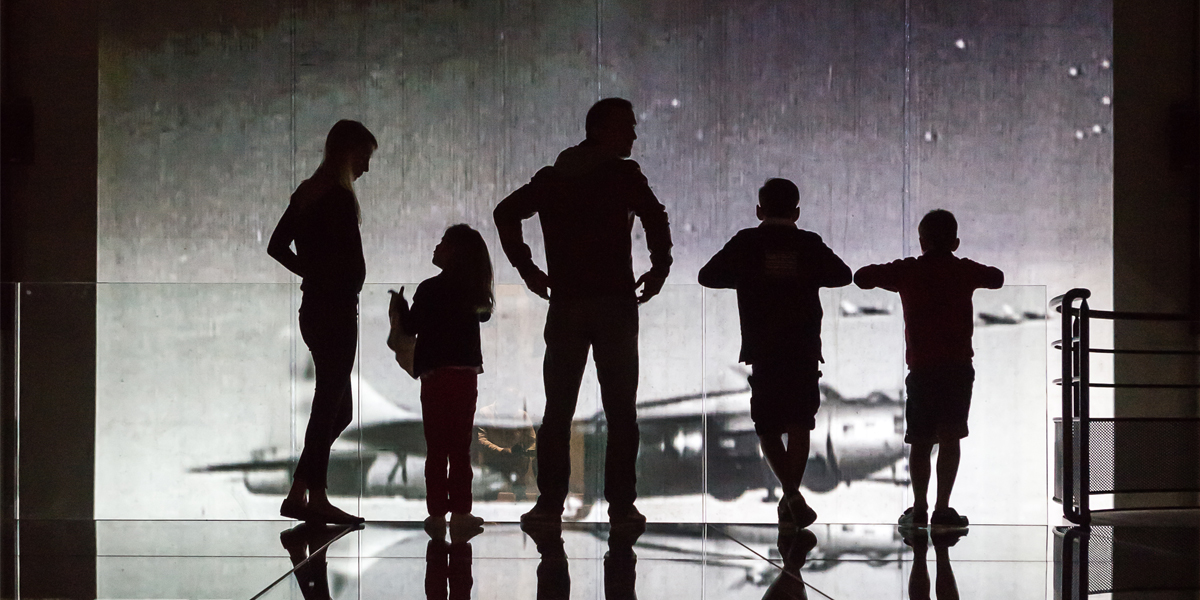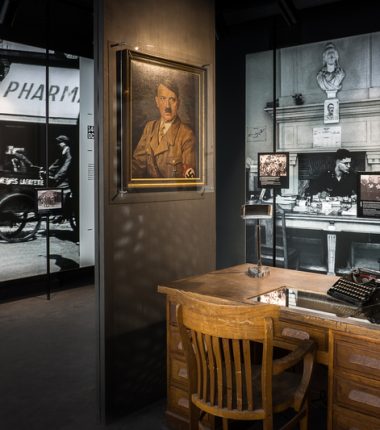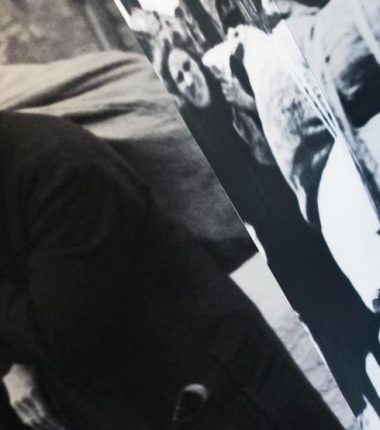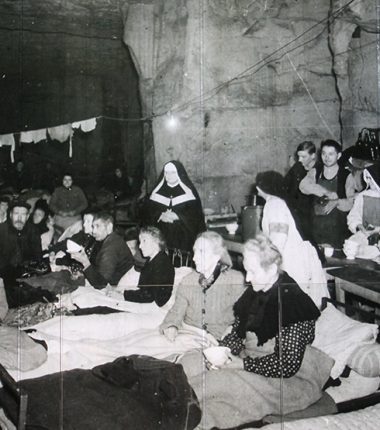During your visit to the Falaise Memorial, discover three large spaces: one dedicated to the daily life of civilians under the Occupation, another on the Liberation and finally a immersive room plunging you into the heart of the hell of the bombings of the Second World War.
Aaccessible to all, with or without a visit, the Falaise Memorial shop offers you many products, including everyday objects from the period. You will also find a vast selection of books dedicated to the Second World War on site.






